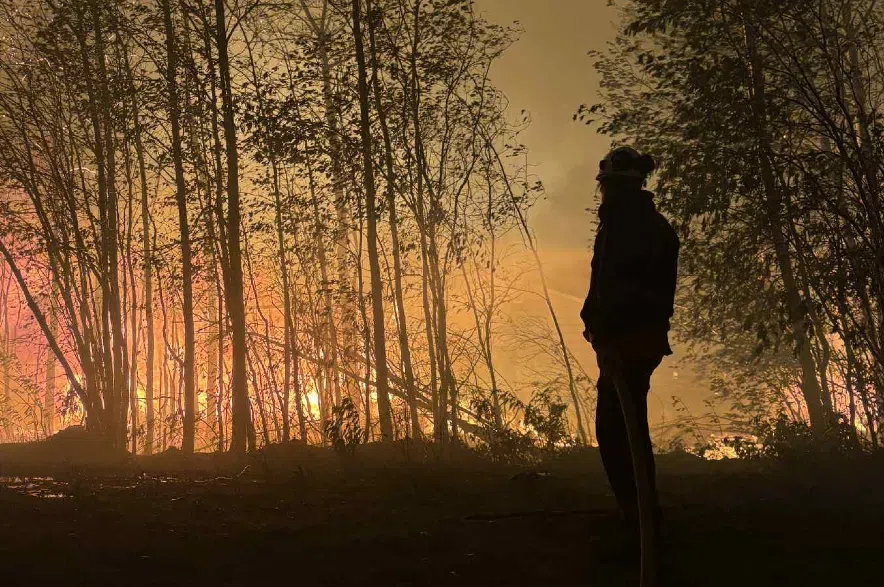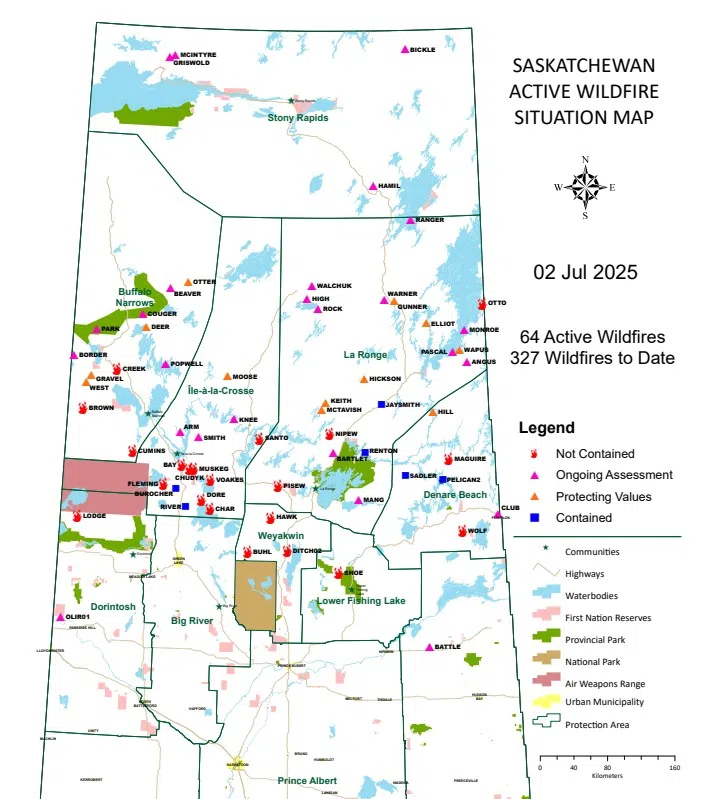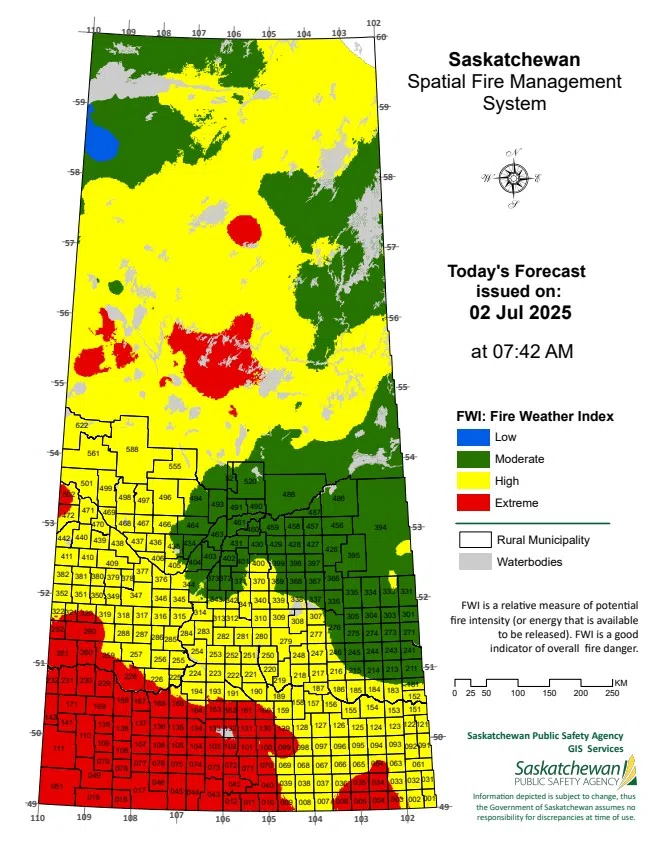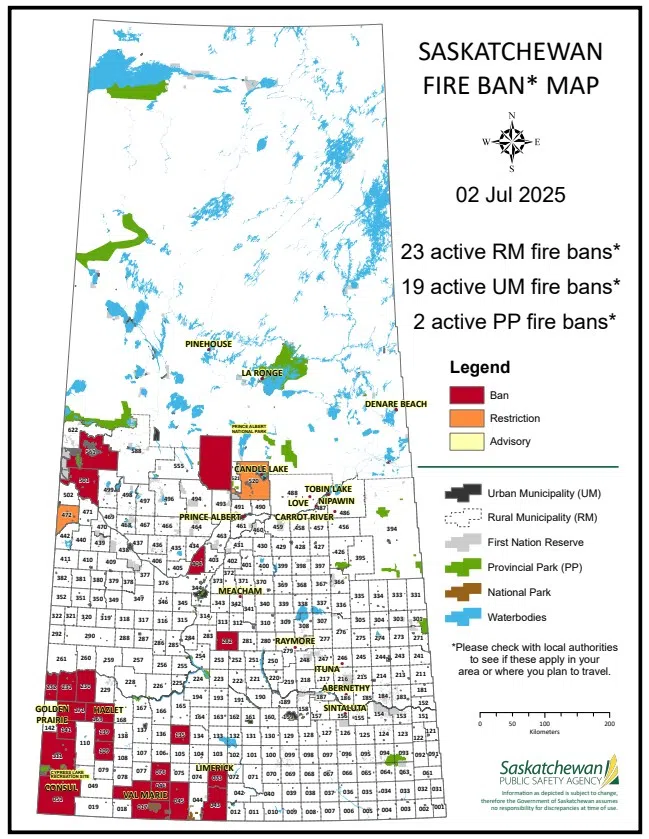Saskatchewan is facing one of its most destructive wildfire seasons in recent memory, as flames devour forests, destroy homes and cabins, and force hundreds to flee.
“We’ve lost significant infrastructure and homes,” said Steve Roberts, Vice President of Operations with the Saskatchewan Public Safety Agency (SPSA). “The fires have caused significant damage to both private property and critical infrastructure.”
As of 5:30 p.m. on Wednesday, there are 66 active fires across the province, a sharp rise in recent days and well above the typical pace. So far this year, Saskatchewan has recorded 329 wildfires, nearly double the five-year average of 185 for an entire season.
SPSA said in its daily report that 21 of those blazes were not contained, while 27 of the fires were under ongoing assessment and firefighters were protecting values in 12. Six fires were considered contained.
Contained means suppression action is taking place and the fire is not expected to grow in size, ongoing assessment means the fire is being monitored regularly to assess risk to values in the area and not contained means suppression action is taking place but the fire is expected to grow in size, according to SPSA. Protecting values means a fire is active and action is focused on protecting things like cabins and infrastructure.
Read more:
- How Saskatchewan wildfires could affect future insurance policies
- Hundreds of wildfires continue to burn different parts of Canada
- Fire again threatens Lytton, B.C., one of hundreds of blazes across Canada
Weather playing a role
A majority of these new fires were started by lightning.
“The storms that brought the cooler, wetter weather also brought significant lightning with them,” Roberts explained. “As that area dried out, we have started to pick up more fires, primarily on the western half of the province.”
According to Roberts, 2,129 “values,” a term for properties and assets, have either completely or partially burned. That includes 299 homes, 125 cabins and 312 vehicles, along with sheds, trailers, and other property.
The community with the most destruction is Denare Beach.
Some of the largest blazes include the Shoe Fire near Lower Fishing Lakes, which has burned over 554,000 hectares; the Pisew Fire west of La Ronge at over 185,000 hectares; and the Wolf Fire near Denare Beach, currently burning over 161,000 hectares.
New fires continue to emerge, like the Muskeg Fire north of La Plonge Indian Reserve and Beauval, which has grown to over 8,000 hectares.
“There’s a large number of fires on the western side, sort of from north of Beauval, down past the lake, and to Dore Lake,” Roberts said. “It’s not one big fire. It’s just the activity on the west side significantly increased over the weekend due to those fires.”
Communities evacuated
Marlo Pritchard, President of the SPSA, stated that the Bear Creek Resort subdivision has declared an evacuation, resulting in approximately 45 people being displaced.
The Lac La Plonge subdivision, which is mostly cabins, has also been evacuated, while the La Plonge First Nation has relocated roughly 140 people with support from the Meadow Lake Tribal Council.
Around 200 people are currently receiving assistance from various agencies, and more communities remain on alert as conditions could worsen.
To help those impacted, the provincial government has already provided over $5.1 million in financial support.
“Over $5.1 million has been transferred directly to residents or the communities for distribution, and SPSA is actively distributing those cheques to residents this week,” Pritchard said.
Meanwhile, Saskatchewan’s aerial firefighting fleet has been reinforced with two water bombers from Quebec, and the SPSA is exploring the possibility of bringing in additional crews from other provinces or international partners if needed.
Roberts warned the season is far from over.
“We’re officially at the halfway point, and the first half has been, as we’ve known, fairly extreme,” he said. “Long-term forecasts predict above-average temperatures and drier conditions for July and August.”
Officials say that protecting lives, property, and critical infrastructure remains the top priority, but for many communities, the path to recovery will be a long one.














